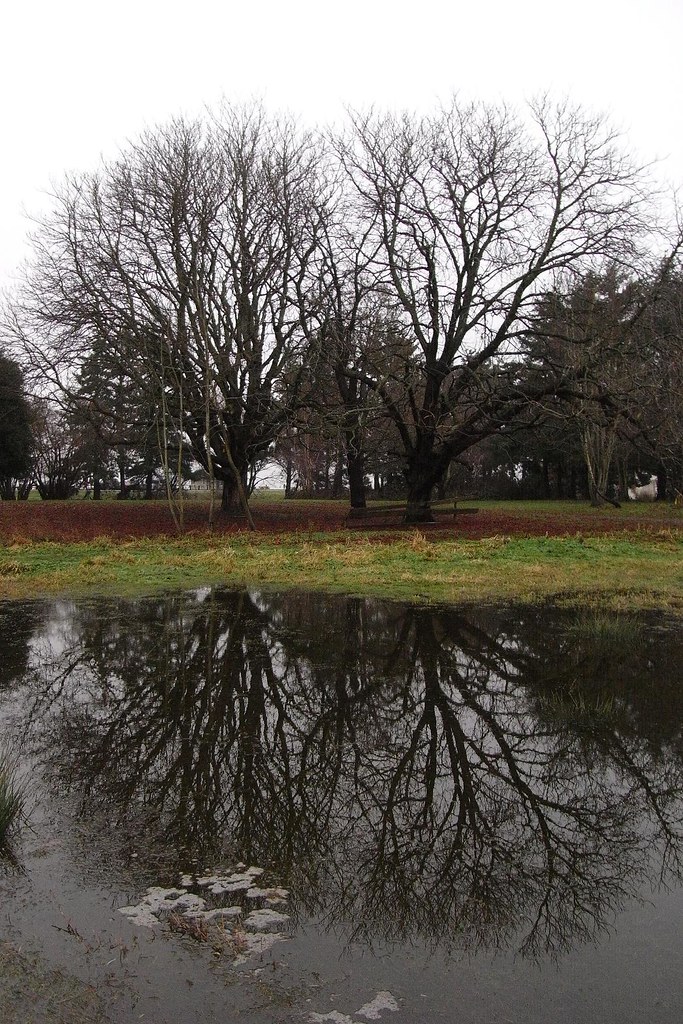The weather in the early afternoon was foggy and high humidity. Just walking from home to the dyke had my glasses all covered with water droplets. So I didn't took too many pictures in the beginning because I was worried that the water vapor would get into the camera and cause damage. Thankfully, the fog lifted late afternoon and so I could return back to my shutterbug self.
Speaking of bugs, I came across many globular springtails on dead logs again. They sure are resilient little critters.
 Saw Bald Eagles on the usual nest again. This time, there were two adults in it. Hope they will stay for a long time.
Saw Bald Eagles on the usual nest again. This time, there were two adults in it. Hope they will stay for a long time. This was what most of the dyke looked like. A thick blanket of water vapors unlifted.
This was what most of the dyke looked like. A thick blanket of water vapors unlifted. Saw this feces on the ground with teeth and claws (of some small rodent) still visible. I wonder where it came from (i.e. the predator that ate this rodent)?
Saw this feces on the ground with teeth and claws (of some small rodent) still visible. I wonder where it came from (i.e. the predator that ate this rodent)?
I like the reflection of the trees. If you tilt your head to the left, together they look like lungs.
 Fog was so thick that you can't even see the YVR airport.
Fog was so thick that you can't even see the YVR airport.This was Accipiter Number 1. If I have to guess, I would say it is a Northern Goshawk because of the dark cap and the white eyebrow stripe (somewhat visible in the pictures) and the light-colored (gray) belly. I actually wandered into the forest where it was perched but couldn't get a focused picture because too many branches were in the way. Then, it flew away.
 This was Accipiter Number 2. It was perched next to the giant (but empty) eagle nest in the Quilchena Golf Course. Again, too many branches were in the way to get a focused picture, and I could always blame on the simple 7.1x optical zoom on my camera, but I am not going to do that. Again, if I have to guess, it might be a Merlin, suckleyi subspecies because its plumage is very dark overall and suckleyi are found in Pacific Northwest.
This was Accipiter Number 2. It was perched next to the giant (but empty) eagle nest in the Quilchena Golf Course. Again, too many branches were in the way to get a focused picture, and I could always blame on the simple 7.1x optical zoom on my camera, but I am not going to do that. Again, if I have to guess, it might be a Merlin, suckleyi subspecies because its plumage is very dark overall and suckleyi are found in Pacific Northwest. Any help from serious birders reading this blog will be greatly appreciated. Thanks.
Any help from serious birders reading this blog will be greatly appreciated. Thanks. Then the fog lifted, and some blue sky was clearly visible in the distance. But it was time to go home.
Then the fog lifted, and some blue sky was clearly visible in the distance. But it was time to go home..



2 comments:
Once again, wonderful photos. You have an eye for observation.
Thank you, Huckleberry. It's an honor coming from such an observant/naturalist like yourself.
Post a Comment